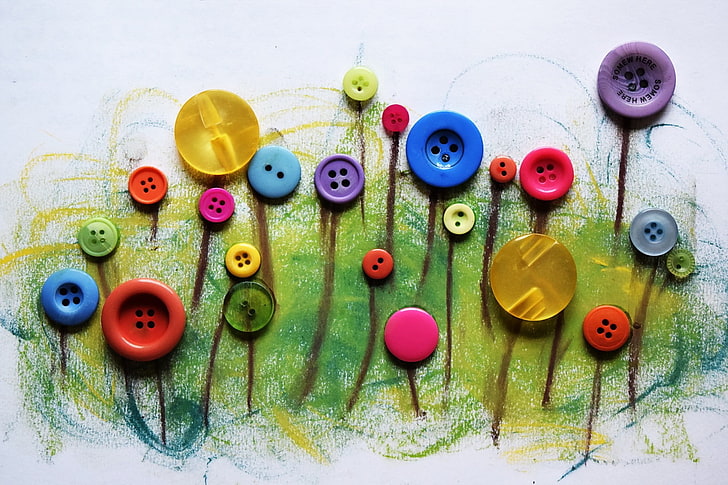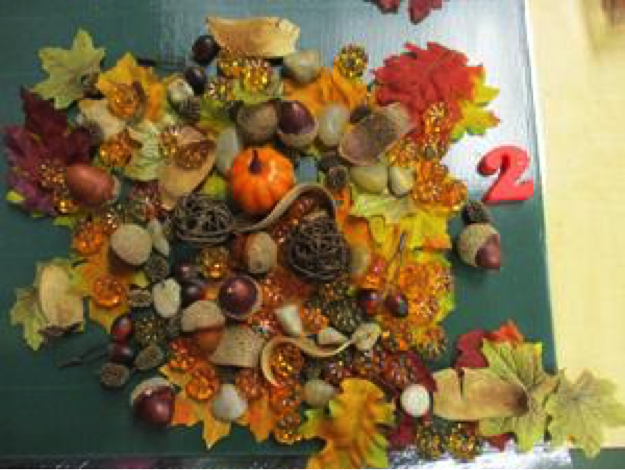I often marvel at the countless hours my children spend playing with the simplest objects. From turning boxes into sophisticated imaginary architecture to sorting pens and buttons, or lining tree stumps to imitate frogs on lilypads and building bridges out of old tires… the possibilities seem endless.
I’ve observed that my children do enjoy the novelty of a commercial toy, but oftentimes they’ll be more interested in the box the toy comes in (bonus if there’s bubble wrapping or styrofoam peanuts). When a toy serves one sole purpose like a robot that makes a specific sound at the press of a specific button, the novelty quickly wears out because there’s no more challenge or room for imagination. However, that empty box it came in leaves so much room for imagination and creativity. As you may have noticed yourself, kids usually prefer play that aligns with their natural curiosity and imagination. One of the best ways of providing materials and space for this type of play is with loose parts.
Loose Parts: What Does It Mean?
The term ‘loose parts’ was first defined in 1971 by a British architect named Simon Nicholson in How NOT to Cheat Children – The Theory of Loose Parts. He described loose parts as being open-ended materials that can be used and manipulated in endless ways. Nicholson underlined that “in any environment, both the degree of inventiveness and creativity and the possibility of discovery, are directly proportional to the number and kind of variables in it”. He believed that environments that are rich in open-ended materials allow young learners to actively engage in their learning through experimentation, manipulation, invention, tinkering, and play. As an architect, Nicolson advocated for playgrounds and school designs that engage a child’s natural curiosity and creativity rather than static playgrounds, parks, and school designs. He criticized how teachers often present students with finished products, materials, or environments, which leave no room for fun, imagination, or that whole creative process that is so deeply rooted and natural for children.
Concretely, loose parts are really any materials that don’t serve one sole purpose or include a specific set of instructions. Children can turn them into whatever they desire. For example, a blanket can become a boat or a fishing pond, rocks can become characters in a story, mud and sticks can become ingredients for a recipe. Loose parts can include collections of man-made or natural materials such as leaves, spools of thread, lego blocks, etc. They could vary in size, colours and textures. Children can combine them, redesign them, line them up, take them apart, move them around and put loose parts back together in countless ways. There’s also no right or wrong way of playing with loose parts, therefore mistakes, errors, and failure aren’t part of the equation.
The Loose Parts Mindset
With loose parts, there’s an essential shift from product to process and it’s all material- and student-led. There’s not one sole purpose for materials but endless possibilities. That’s a change of direction that can be difficult for many teachers because the idea of a curriculum-driven, teacher-defined end product is often the established norm. With the introduction of the Québec Preschool Program, free play is now a component of the early childhood curriculum.
Loose parts play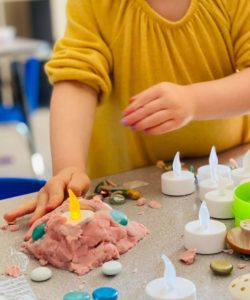 is largely based on the premise that everyone, regardless of age, is a creative being who is curious and keen to discover new things. Through this kind of play, there are so many opportunities for children to explore, observe, analyze, experiment, design, and build creations both indoors and outdoors (playgrounds, forests, gardens, fields, junkyards, etc). Without a set direction or an end product in mind, children quickly learn that there’s no “one good way” of doing something. And when they are allowed to play freely with no outcome in mind, there are no mistakes in this type of free exploration. The students can learn organically as they tinker with temporary creations and have fun while doing so! They will work hard to solve the problems that they create or encounter in their exploration. As adults, we also must learn to refrain from solving the childrens’ problems for them.
is largely based on the premise that everyone, regardless of age, is a creative being who is curious and keen to discover new things. Through this kind of play, there are so many opportunities for children to explore, observe, analyze, experiment, design, and build creations both indoors and outdoors (playgrounds, forests, gardens, fields, junkyards, etc). Without a set direction or an end product in mind, children quickly learn that there’s no “one good way” of doing something. And when they are allowed to play freely with no outcome in mind, there are no mistakes in this type of free exploration. The students can learn organically as they tinker with temporary creations and have fun while doing so! They will work hard to solve the problems that they create or encounter in their exploration. As adults, we also must learn to refrain from solving the childrens’ problems for them.
Many children no longer have that opportunity to play with different types of materials. For many, everyday play rhymes with commercial toys or electronic devices. However, when an environment is rich in loose parts, children are likely to discover multiple ways to manipulate them and discover new ways of thinking or of processing the knowledge they have learned.
Bring the Outside In and the Inside Out
Loose parts play can happen both indoors and outdoors. You can also bring outdoor parts indoors, and vice versa. An exciting way of growing your collection of outdoor materials can be done through Curriculum Walks. In her recent book, A Walking Curriculum, Dr. Gillian Judson of Simon Fraser University suggests teachers and students should simply get outside: “The simple act of taking a walk – a walk with a curricular focus – can have multiple positive consequences – many of which are much more profound than we ever imagine.” Take your students outside for a walk around the playground or neighborhood with the intention of collecting materials of different textures or various colors. The children will naturally observe them, analyze their properties, sort them and use them in their own creative ways (artwork, counting, stacking, placing them to shape letters or numbers) or for creating ephemeral art. One of the joys of ephemeral art using materials collected from outdoors is the materials can be returned back to nature. This is a beautiful approach to respecting and caring for our land, as well as reducing consumerism. Items such as pine cones and acorns can be placed back and students can take pictures of their art to share with their family and friends.
To the child, as an artist, everything is relevant, little is unseen. -Horowitz
Here are some examples of outdoor and indoor materials to inspire you. Be creative! Also, before you begin, consider the ages of the children you’re working with as some parts may be too small or too dangerous to manipulate.
Some Ideas for Outdoor Materials
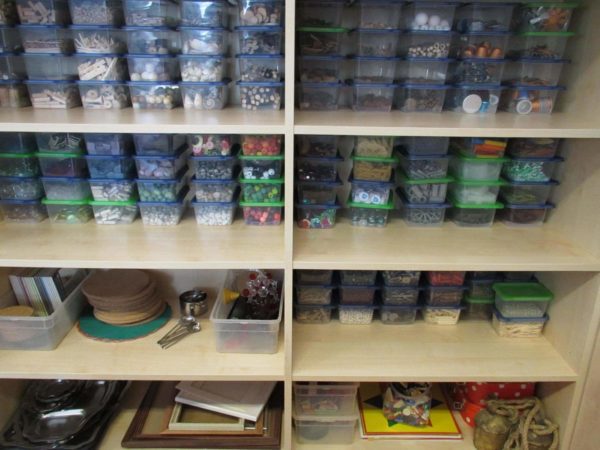 Water, sand, earth, snow, mud, twigs, branches, tree stumps, leaves, flowers, pinecones, shells, bark, rocks, feathers, pine needles, grass, moss, tires, containers, tools, ropes, hoops, buckets, balls, tires, pieces of wood, wood pallets…
Water, sand, earth, snow, mud, twigs, branches, tree stumps, leaves, flowers, pinecones, shells, bark, rocks, feathers, pine needles, grass, moss, tires, containers, tools, ropes, hoops, buckets, balls, tires, pieces of wood, wood pallets…
Some Ideas for Indoor Materials
Arts & craft materials (buttons, spools, popsicle sticks, beads, clay, etc), building materials (wood scraps, nuts & bolts, washers, wire, tiles, etc), office supplies (paperclips, magnets, pens, erasers, etc), manipulatives, props, sensory materials, recycled materials, kitchen & food items (macaroni, corks, etc), home objects (clothespins, boxes, etc), play figurines, blocks, anything outdoor you want to bring indoors…
Keeping All Those Loose Parts Together… Some Storage Ideas
Materials should always be presented in a beautiful and sorted way. As a teacher or parent, it is essential to model how to sort and place the loose parts when the creative play is over. Once the children get the hang of it, they oftentimes even take pleasure in deconstructing their ephemeral creations, sorting the loose parts, and placing them back into the containers. If the materials were initially beautifully sorted and presented, the children will be more inclined to put them back in the same organized way. And it’s really not that surprising because children tend to enjoy sorting and creating patterns or sequences with the objects around them.
Materials should therefore be organized aesthetically, separated and sorted, placed in (transparent) containers, and made easily accessible to the children. Some storage ideas include plastic boxes with or without separators, recycled suitcases, do-it-yourself cardboard boxes, shoe boxes, egg cartons, jars, or take-out food containers. Think reuse and recycle.
What is My Role as a Teacher?
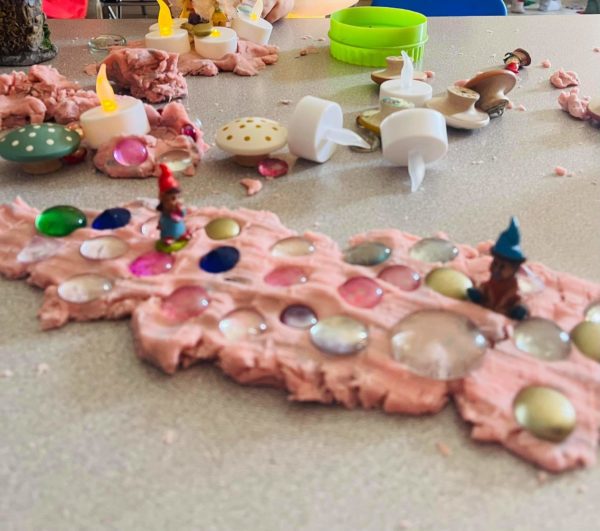 In 2017, LEARN consultant Christiane Dufour teamed up with three Sir Wilfrid Laurier kindergarten teachers. Their goal was to develop a play-based approach to STEAM activities that aligned with the values and program of early childhood education. Early on in the process, they made a key discovery: “The habit of having an end-product goal in mind and focusing on planning the appropriate steps to achieve it is so ingrained that it can be both unconscious and unspoken.” It may take several iterations and lots of practice and patience to implement that shift from product to process. Instead of taking the lead, the teacher must learn to allow their students to explore in the direction of their choosing and at the same time, learn how to intervene as facilitators. Christiane’s team called this letting the materials lead, “that is, enriching the environment with new materials or resources which can take the explorations in new directions.”
In 2017, LEARN consultant Christiane Dufour teamed up with three Sir Wilfrid Laurier kindergarten teachers. Their goal was to develop a play-based approach to STEAM activities that aligned with the values and program of early childhood education. Early on in the process, they made a key discovery: “The habit of having an end-product goal in mind and focusing on planning the appropriate steps to achieve it is so ingrained that it can be both unconscious and unspoken.” It may take several iterations and lots of practice and patience to implement that shift from product to process. Instead of taking the lead, the teacher must learn to allow their students to explore in the direction of their choosing and at the same time, learn how to intervene as facilitators. Christiane’s team called this letting the materials lead, “that is, enriching the environment with new materials or resources which can take the explorations in new directions.”
As the children play and explore, problem solve and create, the teacher’s role is to document, observe and interact with them. Documenting learning can be done in a variety of ways such as taking pictures and videos. Try to avoid simply documenting the end result – document the whole learning process. Adopt the stance of the observer: simply ask questions or offer comments. Christiane mentions that through observations and guiding questions, you can also help the children develop vocabulary around the materials they are playing with. For example, you could ask “What are you doing right now?” or “I see that you pinched the clay. Can you show me how you do that?” or “Tell me about the imprints you made in the clay”, “What else could you do with it?”.
Another final tip I find quite valuable is to embrace the Power of Materials! It is crucial for students to become familiar with the materials before being capable of creating anything with them. If a child has never manipulated clay, you cannot expect them to know how to play with it when provided with a ball of clay. Children naturally want to learn the properties of materials (Does it sink or float? What happens if I stretch it this way? Can I remodel it that way?) and they take pleasure in manipulating materials in different ways. Christiane and the three teachers were in shock when they first gave their students clay: the children became “primitive, primal, little savages: they punched the clay, they karate chopped it, they threw it on the table, they were loud and boisterous.” The teachers instinctively resisted the urge to control this behaviour, allowing the children instead to explore in their own way. Soon the energy in the class came down. The children became focused and concentrated. The clay even had a calming effect on children who were normally agitated. The teachers noted “their mind, body, facial expressions just became calm”, a rare occurrence for some.” That is the Power of Materials.
Loose Parts Naturally Support Curriculum
Play is the highest form of research. – Albert Einstein
Loose parts play provides infinite opportunities for open-ended learning. Children dive into concrete experiences that occur naturally, as opposed to directed instruction. For example, a student can naturally observe the mathematical concept of “bigger than” or “smaller than” by comparing objects with one another, rather than being taught definitions or through teacher-led demonstrations. Connections to subject areas seem almost instinctive.
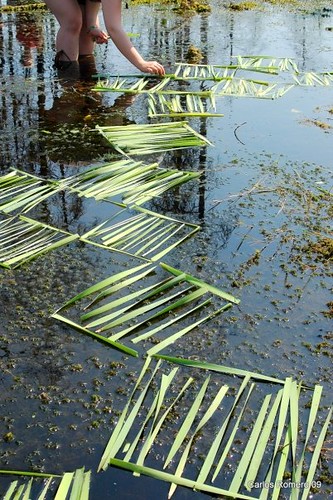
In their book, Loose Parts: Inspiring Play in Young Children, Lisa Daly and Miriam Beloglovsky depict several examples of curriculum connections:
Math
Children acquire their first math skills and numerical concepts when they manipulate small loose parts, like blocks and bottle caps, by sorting and classifying, and combining and separating them. They learn one-to-one correspondence when they make connections among loose parts. Once they begin integrating loose parts into their games, you commonly hear them start to count and see them arranging the parts in specific sequences, patterns, and categories by color, type, number, and class. Loose parts lend themselves to classification. The concept of measurement becomes clear when children play with tools like cups, sticks, funnels, and sifters. Measurement, equivalency, balance, spatial awareness, conservation, and logical classification are precursors to higher mathematical skills that loose parts readily support.
Physical Science
Loose parts help children investigate and actively construct ideas and explanations about physical properties of the nonliving world. Children gain deeper knowledge of how things work when they can experiment with stacking boxes, tubes, and bottles. They can also test multiple hypotheses involving gravity, force, weight, distance, and height with these materials. Children learn that things move in many various ways (motion) through playing with loose parts that can be pulled and pushed to start, stop, or change their movement. Wooden boards, gutters, and balls help them investigate inclines and gravity. Prisms and open-ended materials that are transparent, translucent, or opaque on a light table or overhead projector help children experiment with color, shadows, and reflected or refracted light.
Language and Literacy
Loose parts promote language development when children use them as props to engage in rich conversations and storytelling with peers and adults. Describing the items they manipulate, children can test new, complex words and engage in productive arguments that increase their critical-thinking skills. They make connections between loose parts, the books they have read, and the stories they have heard. They use loose parts to plan and draw their ideas and interactions. Ample, continuous use of loose parts helps children improve their memories, vocabulary, and literacy.
Art
Children often express their ideas and feelings through art. An open art studio offers them tools and materials for telling their stories. Adding loose parts to the art area can enhance their creativity and help them extend their ideas and questions. When loose parts are added to your art center, they offer children invitations to draw, sculpt, collage, explore, and extend their ideas. Such opportunities shouldn’t be confined to the art area though. Fill your indoor and outdoor settings with open-ended resources to encourage creative expression everywhere. Children’s sense of beauty can be as easily seen in their arrangements of sticks lined up side by side, wooden planks propped symmetrically against a lodge, rock mosaics laid in sand, and pinecones arranged in spirals.
Movement and Music
Music and movement captures children’s attention and hearts. Movement for children mostly takes place through self-directed, self-initiated play as they freely move their bodies. Movement possibilities with loose parts such as scarves, hoops, and ribbons are endless and provide opportunities for children to improvise. Musical play often means hitting items as hard as possible to see how they sound, and loose parts offer almost limitless opportunities to explore sounds that can be exuberant, random, noisy, chaotic or quiet, gentle, and focused. Almost all children will naturally have the ability to interact with music.
In the end…
For some people, loose parts play might feel like unfamiliar territory. Let’s face it, things can get messy and the learning is very open-ended. However, it is so worthwhile seeing your students learn through that Power of Materials. Let their imaginations run wild and observe the joy they experience, for example, while creating ephemeral art with respect to nature.
Having your students learn from playing with loose parts won’t happen overnight. It happens over time and becomes part of your routine. Resist that deeply rooted urge to direct activities – keep those hands behind your back and simply guide your students through observations and reflective questions. For more ideas about play-based learning or STEAM activities, check out LEARN’s Open Creative Livestream on Loose Parts.

